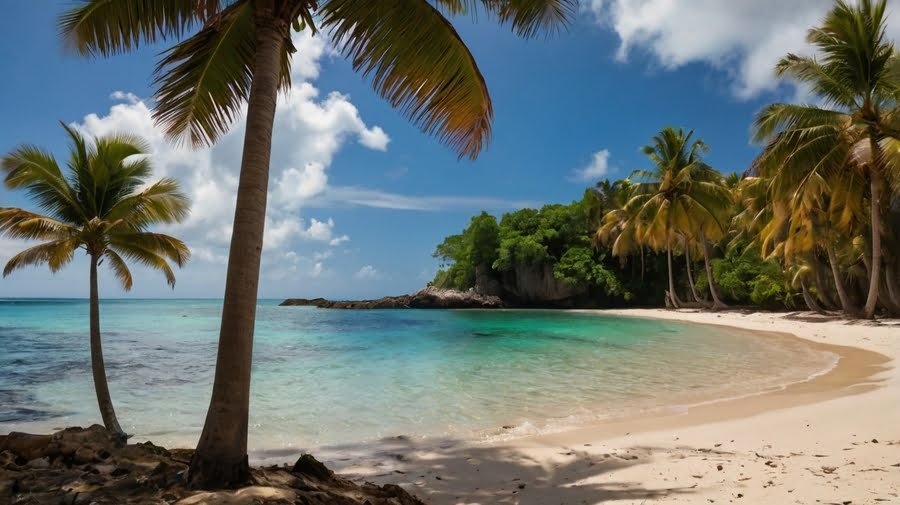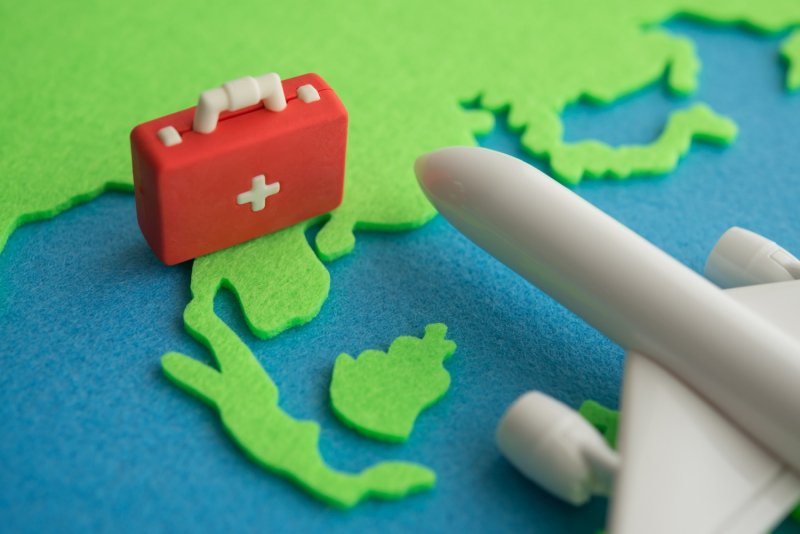Tips & Advices
Food and Water Precautions for Travelers | Yellow Book

Introduction
Contaminated food and water pose an infectious disease risk to travelers due to the numerous pathogens and toxins that can be transmitted. Additional information on pathogens and toxins associated with travelers’ diarrhea and treatment options can be found in the Travelers’ Diarrhea and Post-Travel Diarrhea chapters.
Food
Travelers should select food with care. While abroad, travelers should follow food safety practices recommended in the United States. Raw food, including unpasteurized dairy products, is especially likely to be contaminated. Raw or undercooked meat, fish, shellfish, eggs, and produce can be contaminated with pathogens, and some fish harvested from tropical waters can transmit toxins that survive cooking.
In areas where hygiene and sanitation are inadequate or unknown, travelers should take additional food safety precautions, as described in Box 1.7.1.
Box 1.7.1: Safe food practices for travelers in areas with inadequate or unknown hygiene and sanitation
In restaurants, inadequate refrigeration and lack of food safety training among staff can result in transmission of pathogens or their toxins. Consumption of food and beverages obtained from street vendors increases the risk of illness. In general, fully cooked foods that are served hot and foods that travelers carefully prepare themselves are safest.
Travelers should exercise the same caution about food and water served on flights as they do for restaurants. Additionally, travelers should not bring perishable food back to their home country without refrigeration. Travelers can use insulated packaging and materials, such as frozen gel packs, to keep perishable food cold in transit. Perishable food should arrive at least as cold as it would be in a refrigerator (4°C [40°F] or below) and should not sit at room temperature for more than 2 hours. Travelers are prohibited from bringing some food items into the United States from abroad; refer to the United States Department of Agriculture’s Animal and Plant Health Inspection Service guide for travelers for more information.
Feeding infants
Breastfeeding
For infants ages <6 months, the safest way to feed is to breastfeed exclusively. Practicing careful hygiene when using a breast pump and washing pump parts using a safe source of water can reduce the risk of getting pathogens into the milk. For details, see How to Keep Your Breast Pump Kit Clean: The Essentials.
Formula
For infants who are formula-fed, parents should consider using liquid, ready-to-feed formula that is sterile. When preparing formula from commercial powder, mixing it with a safe source of water following the manufacturer’s instructions usually is sufficient. Although no powdered formula is sterile, travelers should consider packing enough for their trip because manufacturing standards vary widely around the world.
For infants ages <3 months and those with weakened immune systems, formula safety can be increased by reconstituting powder using hot water (≥70°C [≥158°F]). Boil water and wait about 5 minutes before mixing with formula powder; after mixing, wait for the prepared formula to cool before feeding the baby. Prepared formula should be used within 2 hours of preparation or refrigerated for a maximum of 24 hours. After feeding, any remaining liquid or prepared formula should be discarded. Once opened, formula containers should be stored in a cool, dry place with the lid tightly closed and used within 1 month.
For more on infant feeding hygiene:
Water
Swallowing, having contact with, or inhaling aerosols of contaminated water can transmit pathogens that cause diarrhea, vomiting, or ear, eye, skin, respiratory, or nervous system infections. Travelers should follow safe water practices recommended in the United States while abroad.
Drinking water and other beverages
In many parts of the world, particularly where water treatment, sanitation, and hygiene are inadequate, tap water can contain disease-causing agents, including bacteria, viruses, parasites, and chemical contaminants. Consequently, tap water might be unsafe for drinking, preparing food and beverages, making ice, cooking, and brushing teeth. Infants, young children, pregnant women, older people, and immunocompromised people (e.g., persons with HIV, on chemotherapy, or who take certain immune-suppressing medications) might be especially susceptible to illness.
Travelers should avoid drinking or putting tap water into their mouths unless they are reasonably certain the water is safe. Similarly, travelers should avoid ice unless they are reasonably certain it was made using safe water. Box 1.7.2 provides tips and recommendations of other safe water and beverage practices for travelers.
Box 1.7.2
Recreational water
Pathogens that cause gastrointestinal, respiratory, skin, ear, eye, and neurologic illnesses can be transmitted via contaminated recreational freshwater or marine water. Water from inadequately treated pools, hot tubs, or splash pads can also be contaminated. Recreational water contaminated by human or animal feces, sewage, or wastewater runoff can appear clear but still contain disease-causing infectious or chemical agents. Ingesting even small amounts of such water can cause illness. Infectious pathogens (e.g., Cryptosporidium) can survive for days, even in properly operated pools, splash pads, and hot tubs.
To protect themselves and other people, travelers should take health and safety precautions before, during, and after entering recreational water, as described in Box 1.7.3. Additional guidance can be found on CDC’s Healthy Swimming website.
Box 1.7.3: Healthy swimming for travelers
| Do not | Enter recreational water if you have diarrhea. |
|---|---|
| Enter pools, splash pads, and hot tubs with improper chlorine or bromine levels, with improper pH, with cloudy water, with loose or broken drain covers, or without a lifeguard and safety equipment (e.g., rescue pole or ring). | |
| Swim or wade near storm drains, in lakes or rivers after heavy rainfall, or in water that smells bad, looks discolored, or has algal mats, foam, or scum on the surface. | |
| Enter freshwater streams, canals, or lakes in schistosomiasis-endemic areas of Africa, Asia, the Caribbean, and South America (see Schistosomiasis chapter). | |
| Avoid | Entering hot tubs if you are at increased risk for legionellosis (e.g., people ages ≥50 years, those with weakened immune systems). |
| Entering recreational water if you have open wounds. If an existing wound (e.g., from a recent surgery, piercing, or tattoo) or wound sustained while swimming comes into contact with untreated recreational water, it should be washed thoroughly with soap and water to reduce the chance of infection. Cover wounds completely with a waterproof bandage if there is a chance it could come in contact with recreational water. | |
| Do | A self-inspection of the recreational water venue for health and safety information. Consider using test strips to make sure the water has a proper free chlorine or bromine level and pH. |
| Wear a nose clip, hold your nose shut, and avoid jumping or diving into warm freshwater to help prevent water from going up your nose. |
Maintaining proper pH and chlorine or bromine concentration is necessary for preventing transmission of most infectious pathogens in pools, splash pads, and hot tubs. If travelers would like to test recreational water before use, the CDC recommends a free chlorine concentration of 3–10 parts per million (ppm) in hot tubs (or 4–8 ppm total bromine) and 1–10 ppm free chlorine in pools and splash pads (2–10 ppm for those using chlorine stabilizer, such as cyanuric acid). Travelers can purchase test strips at most large retail companies, hardware stores, or pool supply stores. When hot tubs are not properly operated and chlorine or bromine concentrations are not adequately maintained, pathogens such as Pseudomonas, which can cause “hot tub rash” or otitis externa, and Legionella, which can cause life-threatening pneumonia, can multiply.
In freshwater recreational areas, there are many naturally occurring pathogens that can cause disease. Naegleria fowleri is a parasite found around the world in warm freshwater, including lakes, rivers, ponds, hot springs, and locations with water warmed by discharge from power plants and industrial complexes. Naegleria fowleri has also been found in inadequately chlorinated water, including in pools, splash pads, and a surf venue. People become infected when water containing Naegleria fowleri goes up their nose, usually while swimming. Healthcare professionals should also inform travelers that Naegleria fowleri infection has been linked to use of contaminated tap water for sinus or nasal irrigation. Even though Naegleria fowleri infection is rare, it is almost always fatal.
In seawater or brackish water, pathogens such as Leptospira and Vibrio vulnificus can infect people through open wounds, potentially causing serious and life-threatening disease. People with underlying health conditions, such as liver disease, cancer, diabetes, and immunocompromising conditions, are at higher risk of V. vulnificus wound infection.
Handwashing
Travelers should follow recommended handwashing practices by washing their hands with soap and water before preparing or eating food, after using the bathroom or changing diapers, before and after caring for someone who is ill, and after contact with animals or animal environments. When soap and water are not available, travelers should use an alcohol-based hand sanitizer containing ≥60% alcohol and then wash hands with soap and water when possible. Hand sanitizer is not as effective as handwashing for removing some pathogens, like Cryptosporidium or norovirus, and does not work well when hands are visibly dirty or greasy.
Tips & Advices
Khareef season: Omani authorities issue safety tips for travelling to Dhofar after crash

In the midst of Salalah’s Khareef season, many UAE residents drive to Oman to experience the lush green landscape as the monsoon rain touches the land.
While the rains bring cooler temperatures and helps create unforgettable moments, it can also bring about safety hazards, particularly near water bodies. Stressing the need to exercise caution, Omani police shared safety tips for those travelling to Dhofar:
Stay up to date with the latest news. Follow KT on WhatsApp Channels.
-
Do not park your vehicle in unsafe places, such as near slopes. This puts your life and the lives of others at risk. Be responsible and stay away from dangerous locations.
-
Never leave children unattended near ponds and bodies of water, as even a moment of inattention can cost you
-
Keep the vehicles clean, and avoid dirty cars. Do not obscure the plate number, as owners can be held legally accountable for this
-
Passengers must not lean out of the window or roof of the car while driving recklessly; this can also expose you to legal accountability.
In a tragic accident in early July, a multi-vehicle collision in Dhofar killed 5 people, including two Omanis and three Emiratis who were from the same family. The crash injured eleven others, including two Omanis and nine Emirati citizens of which five are children.
The Emirati family members who died in the crash are a couple, and the wife’s mother. The couple’s eight-month-old daughter was hospitalised in Oman.
The family had travelled to Salalah for a summer break, but the tragic accident occurred just 12 hours after they left the UAE.
After the collision, UAE travellers spoke to Khaleej Times, sharing precautions to take while planning the journey, such as ensuring the vehicle is in good condition.
They also shared safety advice for driving through the tricky terrain, such as checking fuel levels, and driving at a speed lower than the speed limit in some areas.
Tips & Advices
US Issues Urgent Level 2 Travel Advisory for Dominican Republic Highlighting Crime Risks and Essential Safety Tips for Travelers

Sunday, July 20, 2025
The U.S. Department of State has recently updated its travel advisory for the Dominican Republic, now categorized as a Level 2 destination, advising American travelers to “exercise increased caution” due to the persistent threat of crime. This update follows concerns about violent crime, including robbery, homicide, and sexual assault, in popular tourist areas. However, while some critics have dismissed the warnings, the Dominican Republic continues to attract millions of international visitors each year. Here’s an overview of what travelers should know about the advisory, safety tips, and why this Caribbean gem remains a top vacation destination.
U.S. Travel Advisory Update for the Dominican Republic
On June 12, 2025, the U.S. Department of State elevated its advisory for the Dominican Republic to Level 2, urging travelers to “exercise increased caution.” This warning highlights the risk of violent crime despite the heightened police presence in areas frequently visited by tourists. The advisory pointed out that both locals and tourists may be vulnerable to robbery, sexual assault, and homicide, with criminals often escaping prosecution. However, the Level 2 advisory is considered a moderate alert, advising travelers to be aware of increased risks, but not urging a halt to travel entirely.
Level 2 advisories are a common designation for many tourist destinations around the world, and the Dominican Republic shares this rating with other popular travel spots such as Panama, the Netherlands, and the Philippines.
The Canadian government has also issued a similar advisory, cautioning travelers to “exercise a high degree of caution” due to concerns about violent and petty crime, including fraud, poor road conditions, and issues with public transportation. Despite these risks, the country remains a top destination for North American tourists.
How to Stay Safe in the Dominican Republic
While the U.S. travel advisory highlights the risks present in the Dominican Republic, travelers can take several precautionary steps to ensure a safe and enjoyable trip. The U.S. Department of State has provided key safety recommendations, including:
- Stay Vigilant: Always be aware of your surroundings, especially in crowded or unfamiliar areas.
- Avoid Flashy Displays: Keep valuables like phones, jewelry, and expensive items out of sight.
- Travel in Groups: If possible, explore with others rather than traveling alone, especially in unfamiliar areas.
- Secure Your Belongings: Never leave your food, drinks, or personal items unattended, and always be cautious in public spaces.
- Use Trusted Transportation: Experts recommend using reputable taxi services or ride-sharing apps like Uber instead of unregistered motorcycle taxis (motoconchos).
For emergencies, the Dominican Republic provides reliable services including the 911 emergency response system and a tourist police force (POLITUR), ensuring that help is available when needed. Many resorts also offer private security personnel, and it is strongly advised to stay within the safety of the resort boundaries, particularly for first-time visitors.
Cultural Awareness and Preparation
To ensure smooth travel experiences, it is recommended that visitors familiarize themselves with the local culture, norms, and language. Knowing basic Spanish phrases and understanding the country’s political sensitivities—such as its complex relationship with neighboring Haiti—can enhance both safety and comfort during a stay. Additionally, being respectful of local customs and traditions can help avoid misunderstandings and ensure a more enriching trip.
Why the Dominican Republic Remains the Caribbean’s Top Destination
Despite the recent advisory update, the Dominican Republic continues to be the Caribbean’s most visited country. In 2024, the island saw 34.2 million international arrivals, marking a 6.1% increase from the previous year. American tourists represent a significant portion of this traffic, accounting for nearly half of the arrivals during the first half of 2024.
However, there has been a slight decline in North American visitors in 2025, with a 5.12% drop in American arrivals and a 4.43% decrease in Canadian travelers compared to the same period in 2024. The Ministry of Tourism attributes these declines to seasonal factors such as the leap year and changes in holiday scheduling. On a positive note, South American tourism has surged, with a 31.3% growth in arrivals from that region during the first quarter of 2025.
The Dominican Republic remains a beloved destination thanks to its white-sand beaches, vibrant culture, warm climate, and relatively low-cost travel options. The country’s straightforward entry requirements, including minimal visa processes for most travelers, also contribute to its popularity.
Conclusion
While the U.S. Level 2 advisory highlights valid safety concerns, the Dominican Republic continues to be a top choice for millions of travelers. With proper precautions, visitors can still experience the beauty and charm of this Caribbean paradise. The country’s world-class resorts and tourist destinations are well-equipped to ensure safety, making it a top contender for those seeking a tropical getaway.
Whether you’re attracted to the pristine beaches, the rich cultural heritage, or the affordable vacation options, the Dominican Republic remains a dream destination for travelers worldwide. By staying informed and following safety tips, tourists can continue to enjoy all the beauty the island has to offer while minimizing risks.
Tips & Advices
You really should get health insurance when travelling abroad – BusinessDesk | NZ
-

 Mergers & Acquisitions1 week ago
Mergers & Acquisitions1 week agoAmazon weighs further investment in Anthropic to deepen AI alliance
-

 Mergers & Acquisitions1 week ago
Mergers & Acquisitions1 week agoHow Elon Musk’s rogue Grok chatbot became a cautionary AI tale
-

 Brand Stories2 weeks ago
Brand Stories2 weeks agoVoice AI Startup ElevenLabs Plans to Add Hubs Around the World
-

 Mergers & Acquisitions1 week ago
Mergers & Acquisitions1 week agoUK crime agency arrests 4 people over cyber attacks on retailers
-

 Asia Travel Pulse2 weeks ago
Asia Travel Pulse2 weeks agoLooking For Adventure In Asia? Here Are 7 Epic Destinations You Need To Experience At Least Once – Zee News
-

 AI in Travel2 weeks ago
AI in Travel2 weeks ago‘Will AI take my job?’ A trip to a Beijing fortune-telling bar to see what lies ahead | China
-

 Mergers & Acquisitions1 week ago
Mergers & Acquisitions1 week agoEU pushes ahead with AI code of practice
-

 Mergers & Acquisitions2 weeks ago
Mergers & Acquisitions2 weeks agoChatGPT — the last of the great romantics
-

 The Travel Revolution of Our Era1 month ago
The Travel Revolution of Our Era1 month agoCheQin.ai Redefines Hotel Booking with Zero-Commission Model
-

 Mergers & Acquisitions1 week ago
Mergers & Acquisitions1 week agoHumans must remain at the heart of the AI story

